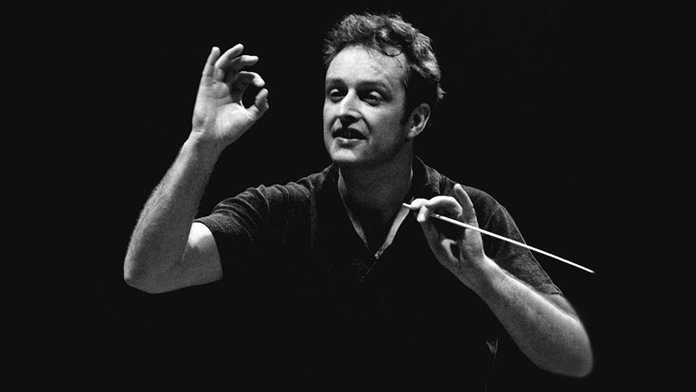
The other day, a student acquaintance of mine asked why there is always “a man dancing” in front of every orchestra. It took a few moments before I realised that he was referring to the conductor. Perhaps it’s a reasonable assumption for someone not familiar with orchestral music. Not long ago, another person asked me why a conductor is necessary at all.
This is a good question, though if you’ve ever played in a large orchestra you wouldn’t need to ask. If you are sitting at the back of the cello section for example, with a dozen double basses grunting away behind you, it’s often impossible to hear what’s going on in the rest of the orchestra. Clearly, someone is needed to beat time and to help players come in at precisely the right moment. During the early eighteenth century, a conductor wasn’t usually necessary because orchestras were smaller and the individual players could hear each other.
But there’s another more important reason to have a conductor, partly due to the shortcomings of musical notation. Printed music doesn’t tell you exactly how loudly or how quietly a piece should be played or how a particular phrase should be performed. Before the metronome appeared in 1868, composers were often imprecise about tempo. Expressions like “a bit slower” or “getting faster” were used, which are vague to say the least. A great deal of musical decision-making was left to the performer.
One of the most challenging tasks in performing music is not necessarily playing the right notes in the right place, but deciding how to play them. In a small ensemble such as a string quartet the players decide among themselves, but this is impractical in a large orchestra. It is the conductor’s job to make the musical decisions and usually spend a considerable time studying the full score of the music long before the first rehearsal.
The full score, by the way shows all the orchestral parts – literally everything that is happening. Individual players have their own music condensed into a single part. The conductor also takes the role of a sound engineer to control the overall sound balance. At an orchestral concert you may be surprised to see that the conductor doesn’t seem to be doing very much work. This is because the work has already been done, hours, days or even weeks before the concert.
Many musicians consider Carlos Kleiber (1930-2004) to be the greatest conductor of the twentieth century, yet he gave comparatively few performances and he avoided the public gaze whenever possible. The sound track of this 1970 documentary is in German and if the minuscule English subtitles are unreadable, try switching to full screen mode.
Orchestral musicians generally don’t like being lectured but Kleiber does an unusual amount of talking, surprising for one who gave only one interview in his entire lifetime. Initially, there seems to be a palpable sense of resistance among the rather dour Bavarian musicians but Kleiber gradually charms them with his quick thinking, fertile imagination, quirky sense of humour and his meticulous attention to detail.
The most persuasive feature of the rehearsal – and indeed the most moving, is how these no-nonsense professionals gradually warm to Kleiber’s personality, his obvious expertise and his delight in the music. Some of them even start smiling and by the end you can sense a shared feeling of achievement.
This is probably Grieg’s most well-known piece: the final movement of the Peer Gynt Suite No 1. The music was originally written for Ibsen’s 1876 play of the same name, but Grieg later extracted some of the material to make two four-movement suites.
The enormous ensemble featured in this video is made up of six different Berlin school orchestras. Sir Simon Rattle has been the principal conductor of the Berlin Philharmonic Orchestra since 2002 and this schools event is part of the Orchestra’s education programme. Sir Simon addresses the young musicians in German and if your command of the language is a bit shaky or non-existent, you’ll probably appreciate the English subtitles.
Like Kleiber, Sir Simon uses metaphors and other imagery to encourage the players and get the sounds he wants. He clearly seems to enjoy working with these young musicians. The orchestra later plays the piece from start to finish (at 19:24) though some of the younger players are obviously struggling. There is more enthusiasm than accuracy in the performance and I suppose this is a classic case of the whole being greater than the sum of the parts. Even so, it makes for compelling and heart-warming viewing.





